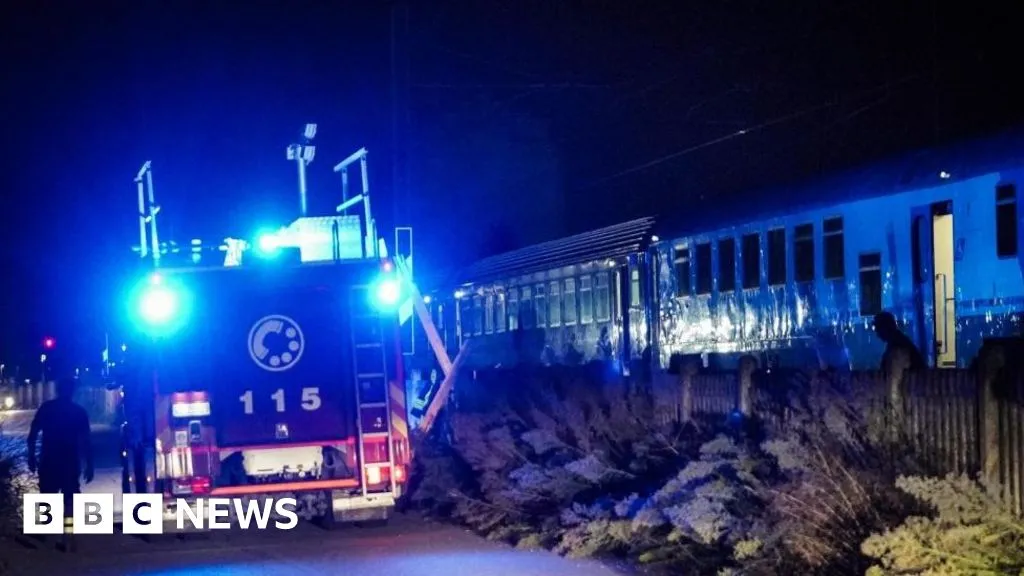- cross-posted to:
- globalnews
- cross-posted to:
- globalnews
cross-posted from: https://lemmy.zip/post/2133566
Archived version: https://archive.ph/Ac3e8
Archived version: https://web.archive.org/web/20230831062638/https://www.bbc.co.uk/news/world-66666981



Unless your operating heavy duty machinery nearby while eating ear protection.
You’re not supposed to eat it…
The employees could be sharing their GPS locations at all times and the train could know not to hit them… Or something along those lines
This is already how it works.
When workers need to access a portion of railtrack (a block), they need to request a possession and isolation from the command center of the line. A possession means no train can approach less than two blocks from the block they will work on, and an isolation means the power is cut (most lines in Europe are electrified).
The procedure to perform this has been specifically designed to avoid miscommunications, with multiple back and forth between the operators on the ground and the command center to ensure one doesn’t mindlessly make a mistake. Usually it’s done by phone but I believe some lines now have apps for it.
This accident should not have happened. If the possession had been granted then at the very least the signaling system would have warned the train driver to stop several kilometers before he reached them. On modern lines the train would have stopped automatically, without human intervention. And signaling systems are extremely robust, they don’t “bug” in a way that makes this possible.
To me this must be a human error. Either the workers worked without a possession (because they though it would be ok, the line was not operating at that time, it was a short operation, yadda yadda. The exact reason why possession requests are mandatory…) or it was an old line and the train driver was not paying attention to the point of ignoring several, big reg lights telling him to stop.
Either way, no GPS location sharing would have helped if someone disregarded safety instructions. :/
Source : I’m not an expert but I did an internship in a company who designs signaling systems in Europe and my project was specifically on the subject of replacing phone calls for possession and isolation with an app on a PDA.
Ferrovie dell stato has stated today towards RAI that the works should not have started until this train had passed. It looks very much like the workers did not have possession of the tracks. Some sourced claim that the manager had not received permission and was possibly not even on site.
Interesting is the fact that the train is in relatively pristine condition if you look at RAIs videos - they definitely didn’t already have heavy machinery in place or they did put it on another track (which is unlikely as the according to the Ferrovie statement the accident happened on the track they were supposed to work on). Another interesting fact is the speed of the train - which had two conductors onboard,btw: The train was doing 160km/h - this is not a speed you use in a segment that you expect works on another track to be done.
Personally if I had to bet money on one theory I would guess the manager (who was the one certified to work with Ferrovie) was not on site/not concentrated, the workers were told when the last train goes through/there was some miscommunication with the guys on scene and they either mistook another train as the “last” train or the “last” one was late/not in their schedule and they started simply by the clock.
Or someone in the control center fucked up beyond believe and that is much more unlikely tbh.
Anyway, those poor bastards, poor families and friends and even poor villages. They basically are all locals.
I used to be a blue collar worker that now works in the office. This is the same as the other unrealistic solutions I put up with regularly.
So now we are going to add another device, which adds another point of failure, that needs to be maintained and monitored constantly.
What happens if that device fails? Who is paying for the expense of this upgrade and the training for the conductor and ground workers to operate and monitor this? What happens if they are distracted while troubleshooting the device and the train approaches them anyways? What happens when the blue collar worker doesn’t give a fuck about safety and turns it off because it’s annoying? This is not a simple fix and rather it adds layers of complications to the entire process.
Especially when it would just be easier to I don’t know, maybe not run so many trains back to back all the time and ensure that the track is closed off? The real issue here is that the company does not want to lose profit, so they are willing to skirt safety concerns by continuing to operate trains while they are being maintained. However every time I make an argument like this it gets shut down and some new idiot tries to recommend more technology to solve something as simple as “turn it off”.
Keep it simple, stupid. Can’t agree more. And that’s a central concept in computer systems and procedures when human lives are involved.
Thank you kindly. I’m actually a huge tech nerd at heart, so it kind of pains me to kill off something cool like that but when it comes to safety I don’t mess around. Simple and straightforward are usually the safest options.
If I sent my boys out to do something, I want them back home to their families later that night in the same condition I sent them there in.